Overwhelmed by weeds? They can get out of control quickly, but there are effective, natural ways to control weeds without harming the environment or your soil. Check out some of the ways that we control weeds on our homestead!
I’ve been told that Southern Idaho weeds are no joke. Luckily, I don’t really have anything else to compare them to! Ignorance is bliss, right?!
We certainly do have a lot of troublesome weeds popping up in every unoccupied space, though! And of course, they aren’t the “friendly” edible weeds like nettles, chickweed and lamb’s quarters. Oh no, these are the angry high desert weeds that run their taproots 25 feet into the earth looking for a drop of water!
I am a firm believer that weeds serve a very vital role in establishing a healthy ecosystem and that weeds aren’t all bad. I’m even planning on creating a “weed garden” to establish some chickweed, dandelion, henbit, purple dead nettle, yellow dock and more! Although, maybe I need to call it something different, because people seem confused when I talk about creating a “weed garden”.
While weeds definitely serve a purpose, I can’t let them all stick around our homestead. Many are just far too invasive and will out-compete native plants.
Plus, we’ve worked too hard cleaning this place up to let it go back to the sad, overgrown state we found it in! We’ve also worked way too hard creating safe ecosystems and habitats to use anything besides natural prevention and management methods to control weeds.
Figuring out which weeds you’re battling:
Before you suit up and go to battle with the weeds, take some time to figure out exactly what your’e working with. Research the weeds, learn their names, figure out what they are and why they are growing there. Knowing which weeds you are dealing with will help you choose the best management method.
Weeds can give you details and clues about soil imbalances, soil composition and more! Weeds also help with erosion control and topsoil retention. And some weeds are pretty harmless and can be left alone while you focus on the more dangerous or invasive varieties.
If you aren’t sure what weeds are growing on your property, talk with a local gardeners or take some samples to your extension office. Nurseries can also help identify weeds. Many extension offices/state departments of agriculture have online resources as well.
Here are the four weeds in particular that I constantly work to control here on the Zenstead:
- Common mallow (Malva neglecta), commonly known as button weed, is edible & medicinal but also extremely invasive. I do sometimes pick the young leaves to use as a cooked green and sometimes I’ll dry it for tea. However, this plant is very prolific! It forms a giant taproot which makes it hard to pull once it has matured.

- Kochia weed (Kochia scopari), which is in the amaranth family, has largely become herbicide resistant and is highly noxious. Fun fact: tumbleweeds are dried, mature Kochia weeds. It’s known as “poor man’s alfalfa” and can actually be used as a fodder for animals, but should only be fed before it blooms. Once it sets blooms, the protein levels elevate to a toxic level and can cause bloat.
- Bur Buttercup (Ceratocephala testiculata) has zero benefits in my opinion! It contains the highly toxic compound, called ranunculi, which can poison sheep and other livestock. The tiny yellow flowers look cute until they mature into hard, spiny burs which drop to the soil. The plant itself has a pretty short blooming season, but they come back each year and quickly spread as the burs set seed.

- Field Bindweed (Convolvulus arvensis) is also known as Creeping Jenny or morning glory. This creeping and climbing vine is extremely noxious and out-competes most native plants. It forms an extensive rhizome root system underground, making it very hard to control.
Since each of these weeds are different, we use a variety of methods to control them. Our natural weed control methods also greatly depend on where the weeds are growing. Here are the main ways that we control weeds on our homestead!
How We Control Weeds in the Garden:
Control Garden Weeds by Hand-Pulling Early and Often:
For weeds that grow in my garden beds, I pluck them as soon as I see them pop up! It’s easiest to control weeds when they are young, so I try to go through the all my garden beds about once a week a in early spring and summer in order to catch them when they are easy to pull and before they set flower.
If the weeds are young and haven’t bloomed, I pull them up and just drop them back into the garden bed. As far as I’m concerned, that weed is now considered “organic matter” and can put back all the nutrients it stole from the soil! If it has bloomed, I will remove it and throw it out in the garbage.
Control Weeds by Mulching Garden Beds:
Mulch is your best ally in the fight against garden weeds! It helps protect your soil from erosion, helps lower soil temps during hot days, helps soil retain moisture, and it helps suppress weeds! It also breaks down to help build topsoil and it feeds the micro-organisms that help create healthy soil! For mulch to be effective, it needs to be about 2” thick.
One of the most important things you can do on your homestead is to use your outputs from one source as your inputs for another source. Mulch is a perfect way to put your waste products to work! We use a mulch mix that is created from various waste sources on the homestead. It includes old pine shavings, alfalfa wasted by the goats, leaves and grass clippings. In the spring and summer, we let the mulch mix cure for a several months in the compost pile before applying it to the garden. In the fall and winter, we apply it directly to the beds and let it cure in the garden beds during the cold season.
Control Weeds in Garden Pathways:
The paths between our raised garden beds are covered in landscape fabric and pea gravel. I don’t even know how old the landscape fabric is, but it’s torn and worn in many areas. Over the years, the dirt and compost has spilled out of the raised beds (especially with help from the chickens!) and has settled on top of the gravel and fabric. So we still have a lot of weeds that grow on top of the landscape fabric.
This is where identifying your weeds can come in handy! Because, along with weed like mallow and thistles, we also have volunteer lettuce, mint, anise hyssop (pictured below) and California poppy growing in our pathways. I selectively choose who gets to stay and who needs to go!
The landscape fabric makes it easy to pull the weeds because their roots are superficial. In the early Spring, when the first big flush of weeds pop up, we burn them back with the propane torch. We usually follow up with a second round of burning about a month later when they sprout again. Burning back weeds early in the season dramatically decreases the amount of weeds that grow back later in the summer! I also go through the garden and pathways and pull as many weeds as I can about once a month. Burning also works really well for weeds that grow between our stone pathways and other areas that are hard to hand-weed.
How We Control Weeds in the Pasture:
Our pasture is still getting established, so there are a lot of weeds! Pasture management is its own beast and maybe I will try to cover what we’ve learned about the topic more in-depth in a future post. For now, we’ll just say that we are working on controlling the truly noxious weeds that tend to choke out the grass (like mallow) and the weeds that could harm the goats (like bur buttercup).
Our favorite method for controlling weeds in the pasture is burning them back using a propane-powered torch. The torch allows you extra precision so you can kill certain areas (the weeds) without effecting too much of the grass. This is helpful in our pasture since the grass is growing right alongside the weeds that we want to eradicate.
When you use a torch to burn back the weeds, it kills the surface area of the weed. For a lot of the spring annual weeds, this is all it takes to kill them. However, for tougher perennials (like the mallow), the plant may regrow from the established root and need to be burned a couple of times throughout the season.
Obviously, you need to apply some common sense when working with fire. Don’t let the flame get out of control and don’t burn in areas where it’s really dry or windy. And always have a hose or water source ready just in case! Bonus pro-tip: Don’t burn cow pies because they smell really bad when they smolder.
How We Control Weeds Everywhere Else!
Landscape Fabric and Mulch to Help Control Weeds:
We’ve started using landscape fabric (weed mat) and mulch in many areas of our property. Now, I understand and agree that landscape fabric isn’t the most organic choice since it is often made with synthetic material. You also can’t build healthy soil when its covered up!
But, with how overgrown and neglected our property was, we had to start by tackling one area at a time. Basically, the weed mat is buying us some time temporarily. It traps out a lot of the weeds and keeps them from growing. For the weeds that grow on the surface of the weed mat, I hand pull or hoe them out, which is easy to do since the roots are superficial.
We’ve lined both sides of our dirt road with weed mat and mulch. Eventually, when we have the time and are ready, we plan to remove the weed mat and start regenerating the soil (similar to what we are currently doing in the flowerbeds surrounding our yard). I plan to create hedgerows and other perennial plantings in these areas… someday! But for now, the weed mat and mulch is a major timesaver while we focus on the rest of the property.
Weed-eating, Burning & Hoe-ing to Control Weeds:
Of course, there are many areas of our property that have lots of weeds – because we just can’t keep up on them all! Who can?! Containing them is our best bet for these areas. We burn them back with the propane torch if we are able to. And if not, we use a weed eater to cut them down before they bloom and set seed.
When all else fails, you can’t go wrong with some old fashioned hoe-ing. And, yeah, there’s no way to say that without it coming out weird. So I’m just saying it! Hoe-ing is a great workout and it’s honestly the one of the best organic ways to control weeds! When done correctly, it cuts the weed off at the root. Depending on the weed, this might be enough to keep it from growing back. There’s a reason this old-fashioned garden tool never went out of fashion!
Goat Weed Control:
Every once in a while, we call in the goats for back-up support – if the weeds are safe for them! Contrary to popular belief, goats really can’t and shouldn’t eat everything. But they do especially love thistles! We also let them eat the Kochia weed before it blooms. They can clear an area quite quickly too!
However, this technique only works in areas where we don’t have other things planted. Goats can be super destructive! And I swear that they will always eat the plants I want to keep before they eat the weeds! If you decide to go with the goat weed control method, there are companies that offer weed eating goat services. I’m sure they do a much more efficient job than our prissy little dairy goats do!
How do you naturally control weeds on your homestead? Share in the comments!
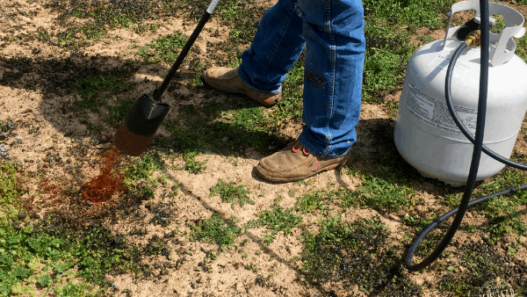













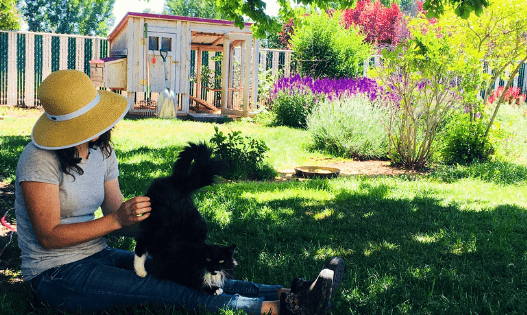

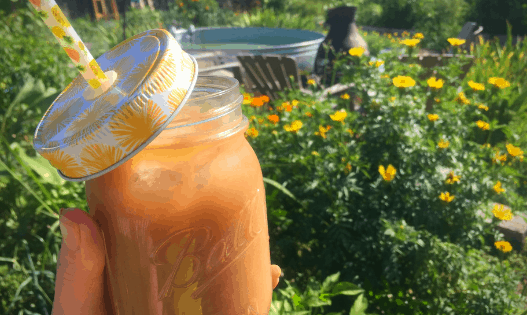
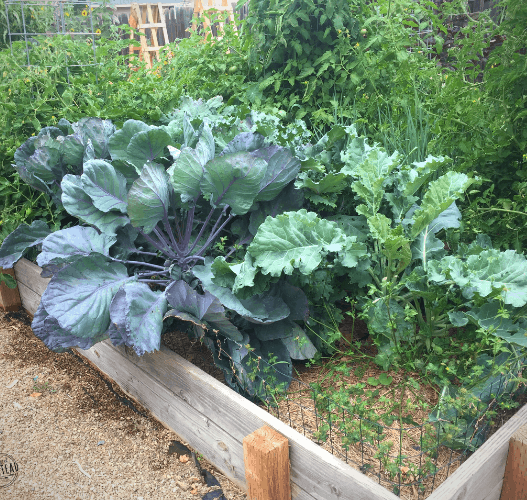
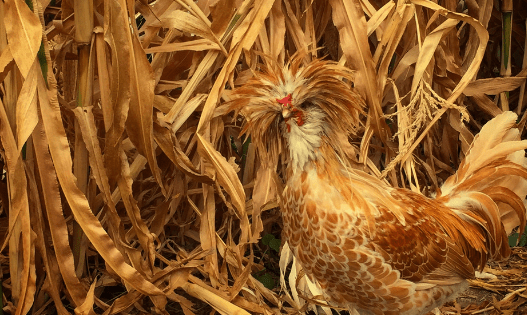
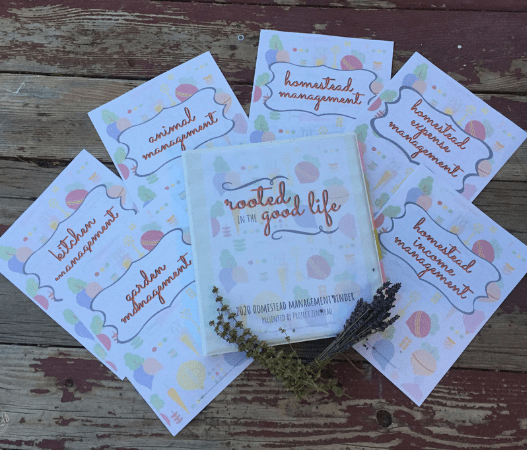
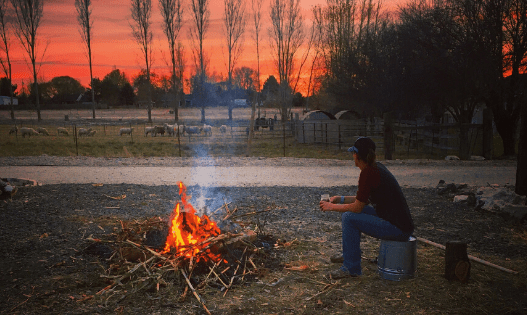

We’re battling the poison hemlock right now – argh. I love our herbs and even our weeds, really I do – they’re welcome to do their thing. Not hemlock. We’re cutting it down before it reseeds right now and we’ll burn it next spring. It’s a weird one that is a biennial but can survive as a perennial. I hate its black guts.
Oh I so agree! That one is far too dangerous to mess around with! I hope that you guys can get it under control! Eek! ?
I love that little jokes that you tell! I always giggle lol
Great information, I have friends who would love this info! Thanks for sharing!
I like the idea of using a torch! I had never heard of that before! I used to use vinegar in my walking paths, but I stopped since I decided I didn’t want to kill too many good microbes and the vinegar sort of spreads everywhere. Now I do everything by hand, but using a small torch seems much more efficient that hand weeding and much more targeted than vinegar!! Thanks!
I agree! I do use horticultural vinegar in very select areas (like next to the road) when I have to. But I feel much more comfortable using the torch. It works really well in gravel and pathways. Hope it helps you never-ending battle!
Thank you for this post. Every spring I am fighting the weeds! We mulch and hand pull them, it’s a never ending battle. I love the idea of the torch.
It works so well and it’s completely natural! Always a good option for larger areas! 🙂 Good luck with the battle – I definitely understand!
I can imagine with such a large garden you have, it’s a full-time job. I like to use the goats…